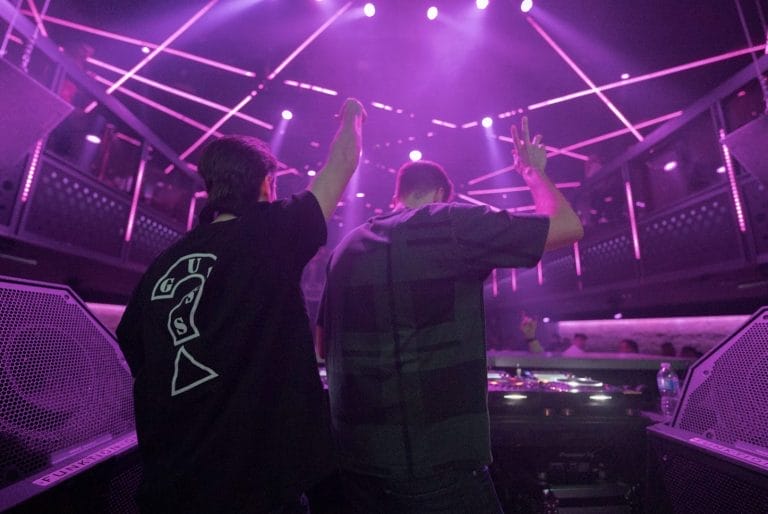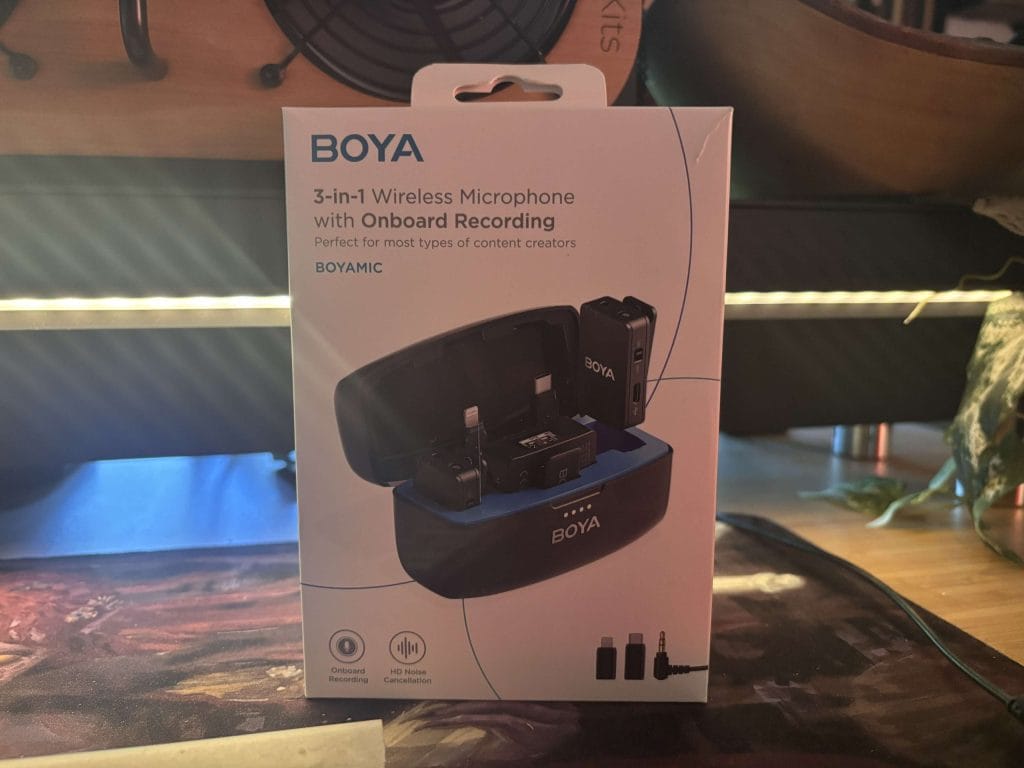
I Tested the Boya Boyamic—Here’s Where It Holds Up and Where It Doesn’t
Table of Contents
I picked up the Boya Boyamic wireless mic system as a budget solution for recording interviews and social content on the go.
After using it in a mix of live shoots, mobile setups, and run-and-gun interviews over the past few weeks, I can say it punches above its price—but only if you understand what you’re getting and where to work around it.
For $159, you get two transmitters with built-in mics, a receiver, two Lavalier mics, and a small charging case that handles USB-C, Lightning, and 3.5mm analog output. That flexibility is a big reason I grabbed it—it plays nice with phones, DSLRs, field recorders, and laptops without needing adapters or extra cables.
Setup and First Impressions Of The Boya Boyamic
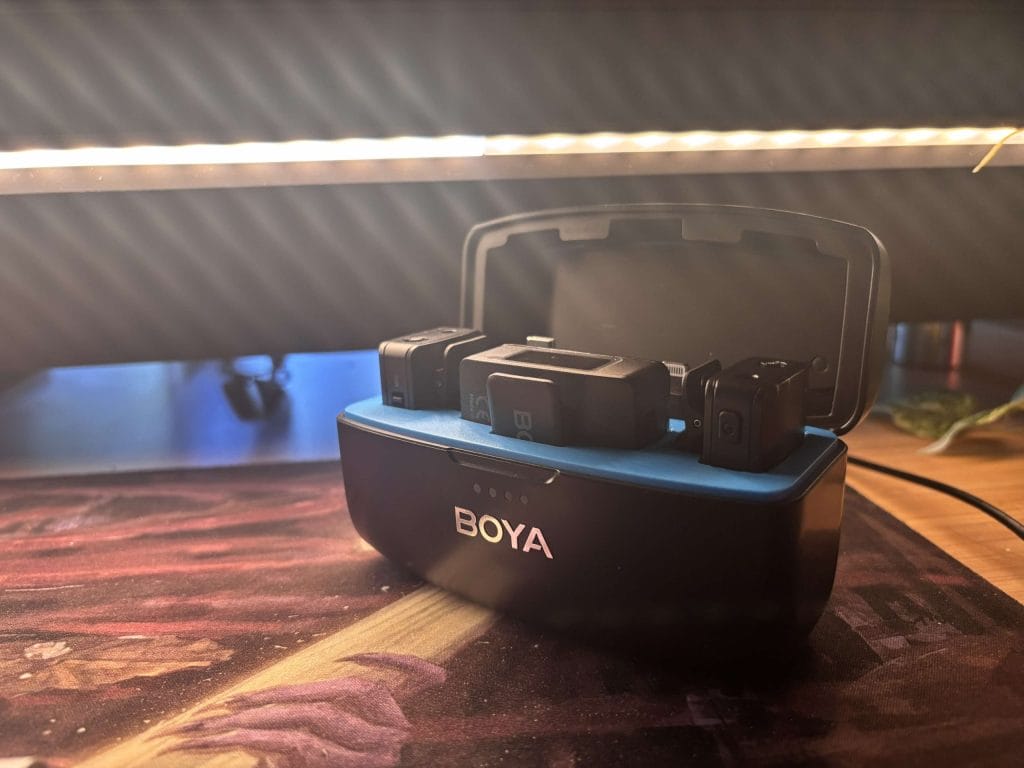
Getting started was simple. The transmitters and receiver synced automatically once I powered them on. I didn’t even open the manual until later. I was shooting a behind-the-scenes clip for a client project and needed something that could record clean sound with minimal gear, so I clipped one mic to my shirt, plugged the receiver into my iPhone, and rolled. That first recording came out surprisingly clean. No static, no drift, no weird mic hum I’ve come to expect from other cheap wireless sets.
The OLED screen on the receiver is actually useful.
You get a live readout of gain levels and battery, and I liked that I could monitor the signal without needing to touch the transmitter again once it was rolling. You can also make basic settings changes from the receiver without walking over to the mic—which sounds minor, but in live settings, it matters.
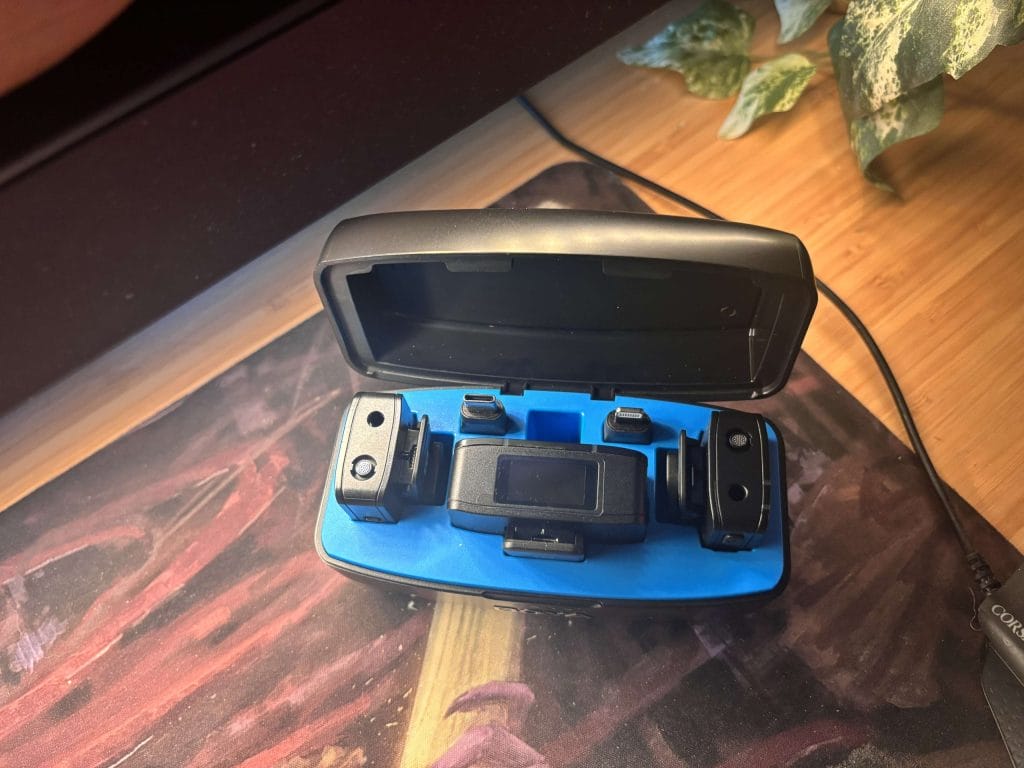
Battery life is consistent. I got just under 10 hours on a full charge with onboard recording off, and around 6 hours with it on. That matched what was advertised. The case holds enough for about one and a half full charges and topped up everything in under two hours. You can also charge it wirelessly, which is something I didn’t expect at this price and ended up using way more than I thought—especially when I was charging gear overnight at home and had limited USB-C ports available.
The onboard storage on each transmitter is 8GB, giving you up to 15 hours of 48kHz/24-bit audio—plenty of room to capture backups or run solo if the wireless connection cuts out. Having that kind of fail-safe in a kit this cheap is what gives the Boyamic real value in unpredictable environments.
Audio Quality and Real-World Use
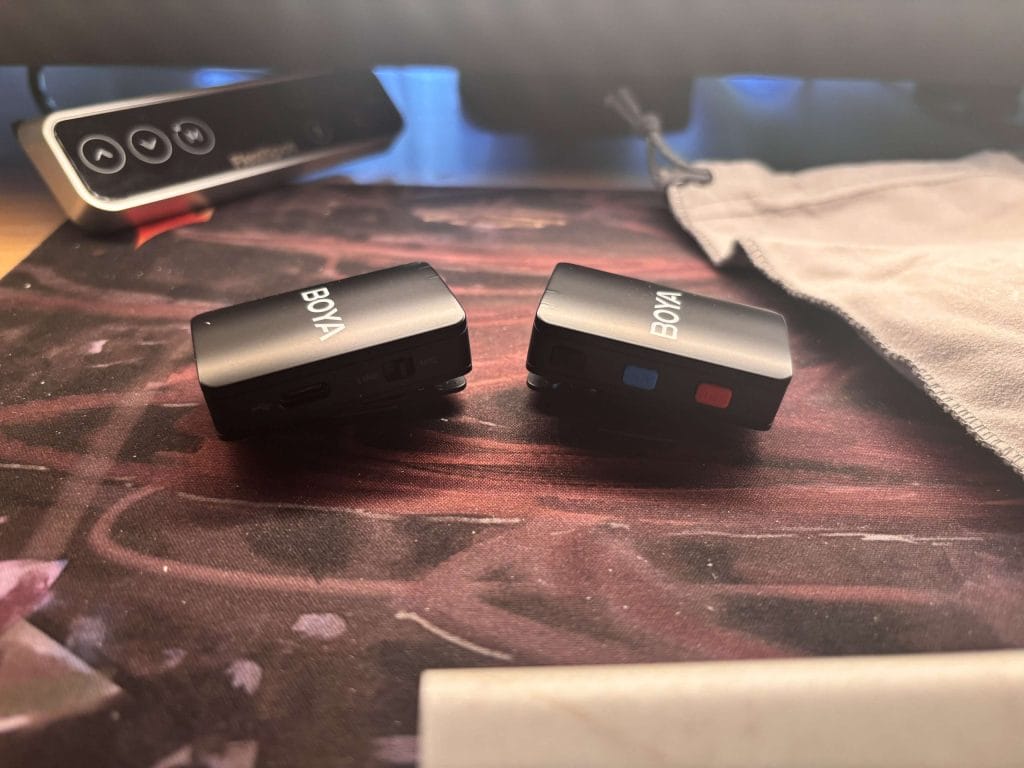
The audio quality is the real win here.
For solo podcast episodes, quick interviews, or grabbing B-roll dialogue, the onboard mics are totally serviceable. I used one transmitter clipped to my collar during a Zoom coaching call that I also recorded locally, and the difference in vocal tone between this and the laptop mic was night and day. It isn’t studio-level clarity, but for what I needed—clear mids and enough presence to avoid post-processing headaches—it worked great.
The included lavaliers are a nice bonus. I used them on a two-person outdoor shoot and liked having the option to hide the mic on camera. The lavs don’t have much low-end, but they do handle speech well and reduce wind noise better than I expected. For the price, they’re usable, and Boya including them in the box makes this a legit all-in-one kit.
Other reviewers noted that the Boyamic mics handle up to 120dB SPL, and that tracks with what I saw during a loud behind-the-scenes event where crowd noise never overwhelmed the mic or clipped the signal. Signal-to-noise ratio sits above 90dB, and you don’t get much hiss even when recording directly to the internal memory.
Range is fine if you’re realistic. I got dropouts around 70–80 feet in a park with trees in the way, but indoors it was rock solid. In my studio, I walked into the hallway and down the stairs while recording locally on the transmitter—no issue. Forbes claims 300m line-of-sight, and maybe you’ll hit that in an open field, but in real use, it’s closer to 30–50m for reliable wireless.
Small Trade-Offs Worth Noting
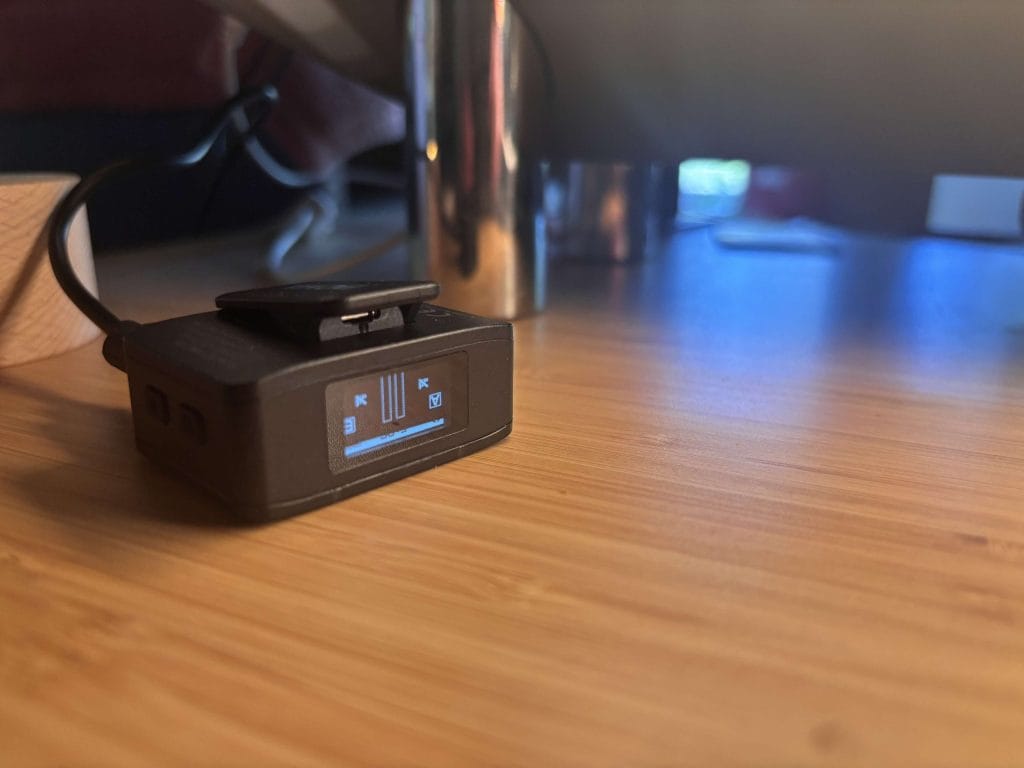
Build quality is what you’d expect. Everything’s plastic. It doesn’t feel fragile, but this isn’t gear you want to drop on concrete. The case is hard polycarbonate—not padded—so I’ve started storing it in a separate pouch inside my gear bag just to be safe.
I also wish I could control onboard recording directly from the receiver menu. Right now, you have to hit record on each transmitter manually. Not a huge issue, but if you’re doing documentary work or multi-cam setups, it’s one more thing to manage.
Also: the built-in noise reduction feature can be a little aggressive. I kept it off most of the time because it tended to over-process, especially with softer voices. If you’re in a very noisy setting, it helps, but don’t expect miracles. Reddit users echoed the same sentiment, pointing out that the EQ and tonal shaping on these mics isn’t quite dialed in for higher-end post work—but again, for this price, the compromise is expected.
One small design win: the magnetic clips.
I didn’t realize how handy they’d be until I had to mic someone wearing a dress shirt with no lapel and no good place to clip anything. Having the ability to mount a transmitter with a magnet backing was a quiet win in a tight setup and they really have a ton of grip to them so they stay on even if you’re hustling or doing a light jog.
Final Thoughts
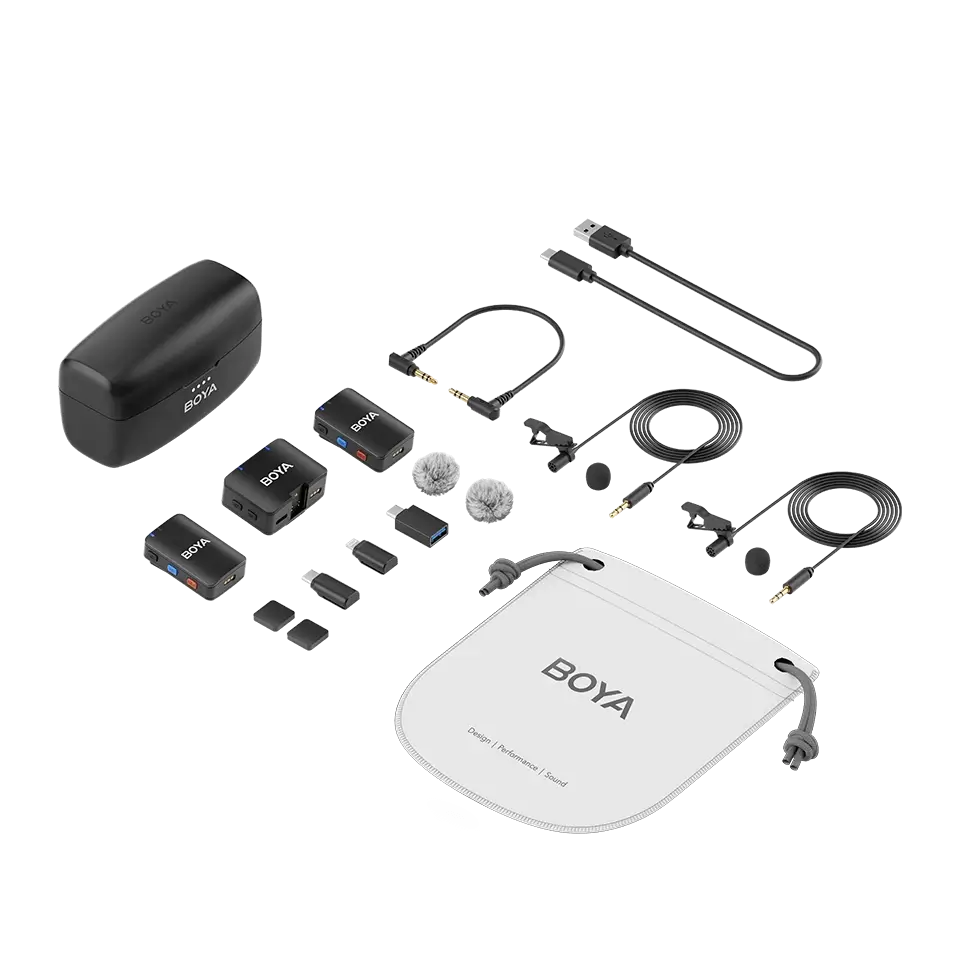
The Boya Boyamic isn’t flashy and it’s not built like a tank—but it solves a real problem. I needed something that could record reliably across a few devices, didn’t cost $300+, and let me back up my audio when the wireless signal got sketchy. This did that, and then some.
I wouldn’t use it on a commercial set or trust it for something mission-critical without a backup—but for mobile creators, podcasters, or anyone who needs clean audio without spending a ton, it’s absolutely worth considering. You’ll still need to work around a few quirks, but once you do, it’s an easy system to trust in your workflow.

